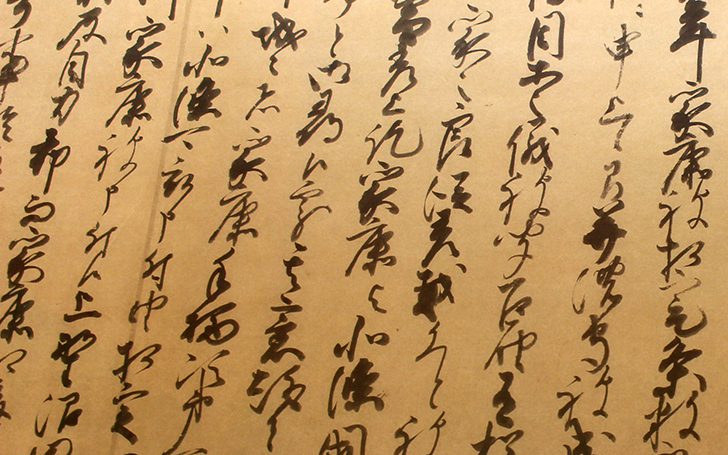61英語で説明したい日本5足袋

日本語訳載せときます。
足袋
足袋とは、和装用の靴下の役割を持った小物です。足袋は、草履を履く際、鼻緒を指で挟んで履くために、指先が分かれているのが特徴です。
足袋に付いている こはぜという金具を引っ掛け糸にかけて履くのが一般的です。また着物を着る際、長襦袢や着物を身につけた後に足袋を履こうとすると、せっかくキレイに着付けた着物が着崩れすることがあります。
足袋は昔は鹿の皮で作られてきましたが、17世紀中頃から木綿製に変わっていきました。現在は足袋の様に足先が分かれた靴下も多くの日本人が履いています。
草履などを使わない、ゴム底で直接地面に使用する地下足袋というものも明治時代から作られています。地下足袋は、軽量で柔軟なため活動性に優れること、布製で比較的蒸れにくく、丸洗いも容易なこと、廉価で入手しやすいことなどの特徴かあります。このため地下足袋は日本では屋外労働者の履物として21世紀初頭でも広く用いられています。
これらの履物は海外の人にも好評です。また外反母趾を抑えたり足の指でしっかり地面を捉えるので健康にもいいですし、多くのアスリートも使っています。どうぞこれらの履物を試してください。
作ったタイピングゲームの一覧はこちらです。
https://typing.twi1.me/profile/userId/113751
あとブログのURLは下記に。関連記事と動画があるのでよろしければご覧下さい。英語ニュース以外もあります。
http://okakyutaro.blog.fc2.com/
| 順位 | 名前 | スコア | 称号 | 打鍵/秒 | 正誤率 | 時間(秒) | 打鍵数 | ミス | 問題 | 日付 |
|---|---|---|---|---|---|---|---|---|---|---|
| 1 | りく | 4919 | B | 5.0 | 98.0% | 241.9 | 1214 | 24 | 20 | 2025/11/05 |
| 2 | aubu | 2255 | F++ | 2.5 | 90.5% | 482.4 | 1214 | 126 | 20 | 2025/11/06 |
関連タイピング
-
Mrs.GREEN APPLEの君を知らないです!
プレイ回数1146歌詞かな995打 -
テトリスサビ!!!!!!!!!!!!!!!!!!
プレイ回数13万歌詞かな167打 -
~英文タイピング練習用 (記号あり)~
プレイ回数468英語歌詞1696打 -
オーバーライド 重音テト
プレイ回数16万歌詞かな208打 -
プレイ回数2.4万短文かな60秒
-
プレイ回数57長文かな1245打
-
めっちゃいい曲....
プレイ回数2.8万歌詞かな200打 -
Mrs.GREEN APPLEの青と夏です!
プレイ回数15万歌詞1030打
問題文
(tabi)
tabi
(Tabi are small items that serve as socks for Japanese clothing.)
Tabi are small items that serve as socks for Japanese clothing.
(Tabi are characterized by their separate fingertips)
Tabi are characterized by their separate fingertips
(so that the thong is held between the fingers when wearing zori sandals.)
so that the thong is held between the fingers when wearing zori sandals.
(It is common to wear a tabi with a metal fitting called kohaze attached to a hook.)
It is common to wear a tabi with a metal fitting called kohaze attached to a hook.
(Also, when wearing a kimono, if you try to put on tabi after wearing an undergarment or kimono,)
Also, when wearing a kimono, if you try to put on tabi after wearing an undergarment or kimono,
(the kimono that has been beautifully dressed may fall apart.)
the kimono that has been beautifully dressed may fall apart.
(Tabi were traditionally made of deer skin,)
Tabi were traditionally made of deer skin,
(but from the middle of the 17th century, they began to be made of cotton.)
but from the middle of the 17th century, they began to be made of cotton.
(Nowadays, many Japanese wear socks with split feet like tabi.)
Nowadays, many Japanese wear socks with split feet like tabi.
(Since the Meiji era, jikatabi, which do not use sandals)
Since the Meiji era, jikatabi, which do not use sandals
(and are worn directly on the ground with rubber soles, have also been made.)
and are worn directly on the ground with rubber soles, have also been made.
(Jikatabi is lightweight and flexible, which makes it easy to move around in.)
Jikatabi is lightweight and flexible, which makes it easy to move around in.
(It is made of cloth, so it does not get stuffy, and is easy to wash.)
It is made of cloth, so it does not get stuffy, and is easy to wash.
(For this reason, jikatabi are still widely used in Japan as footwear for outdoor workers)
For this reason, jikatabi are still widely used in Japan as footwear for outdoor workers
(even at the beginning of the 21st century.)
even at the beginning of the 21st century.
(These footwear are also popular with foreigners.)
These footwear are also popular with foreigners.
(It is also good for your health because it prevents bunions)
It is also good for your health because it prevents bunions
(and your toes firmly grip the ground, and is used by many athletes.)
and your toes firmly grip the ground, and is used by many athletes.
(Please try these footwear.)
Please try these footwear.








